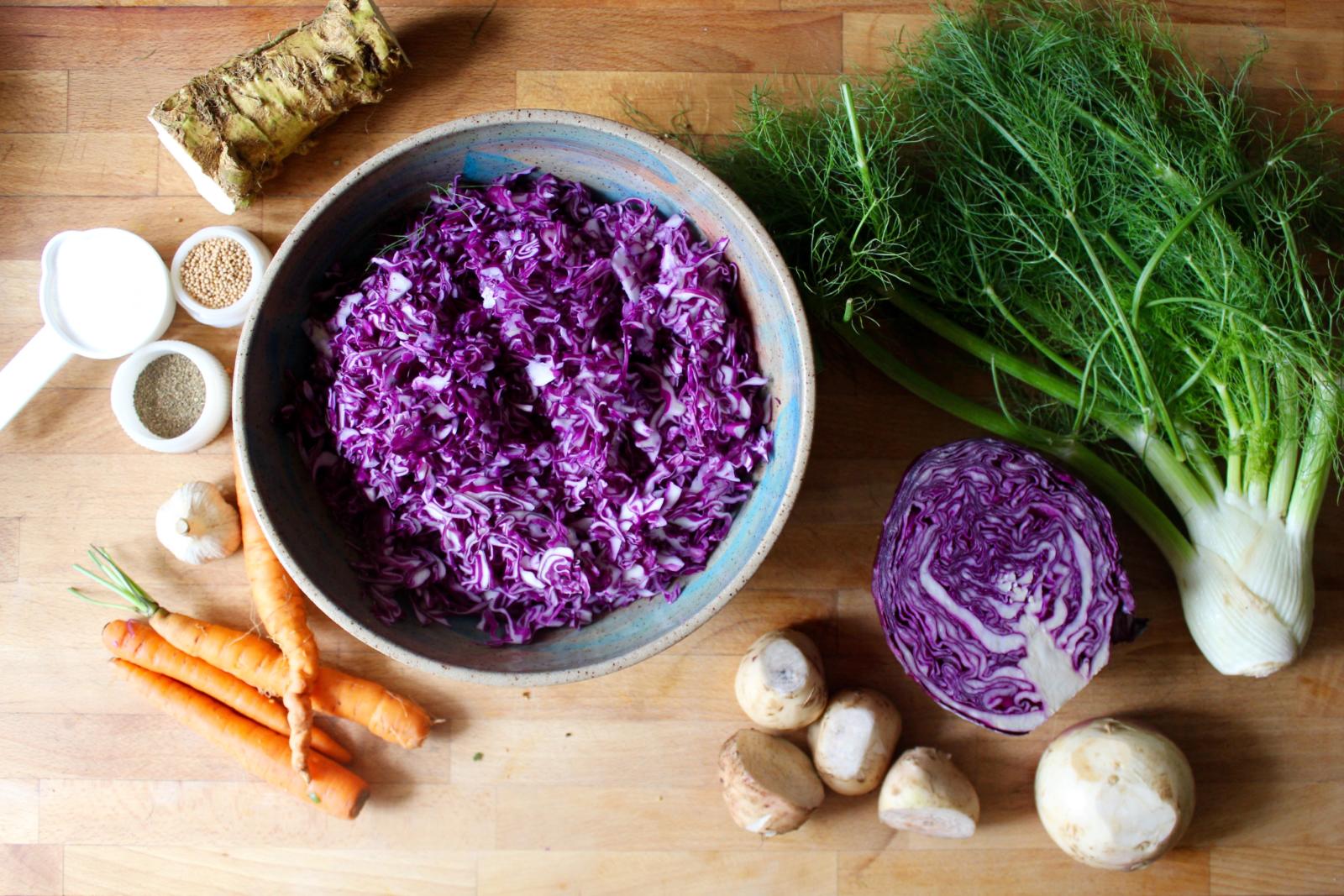Ingredients
Instructions
- 1 medium purple cabbage
- 5 carrots, grated
- 3-inch piece of fresh horseradish root, grated
- 3 small to medium turnips, grated
- cloves of 1 head of garlic, minced
- 1 bulb of fennel, sliced thinly
- 1 Tbsp carraway seeds
- 1 tsp celery seeds
- 2 tsp fennel seeds
- 1 tsp mustard seeds
- 1 tsp red chili flakes (optional)
- scant ¼ cup sea salt
Notes
- Clean the vegetables, making sure they’re free of dirt. Remove any tough outer leaves from cabbage and set aside for another use, or compost them.
- Slice the cabbage head in half lengthwise, so that stem keeps each half together. Shred each half into quarter-inch shreds, either by chopping, using your shredder attachment to your food processor, or with a mandoline. Put cabbage into a large pot or bowl, and continue to grate the rest of the vegetables. Add those to the bowl as well.
- Next, mix your spices and salt together. Add those to the bowl (see photo, above). Massage the shredded vegetables vigorously with your fingers, making sure that the produce is evenly coated with the salt and seeds. You’re breaking down the cell walls in this step, encouraging the vegetables to release their water. Mix and massage until the cabbage softens.
- Next, pack the vegetables into a large glass jar, or several small ones. Pour any residual liquid from the mixing bowl into the jar of cabbage. Leave at least 2 inches of space at the top of the jar. If you have a lot of extra space at the top of your jar, you may wish to weigh it down with a smaller mason jar filled with water or stones, as illustrated by The Kitchn.
- There should be enough brine to completely cover the contents when weighed down. If not, dissolve 1 tsp of salt in 1 cup of water and pour over the vegetables. The liquid prevents mold from growing.
- Cover the lid of your jar with a light cloth (like a dishtowel) and secure it with a rubber band around the lid, allowing your sauerkraut to breathe but preventing pests from invading. Let it sit in a cool, dark place for 4-10 days. You can check on it and taste it along the way. If it’s to your liking, it’s done–there’s no danger in letting it sit for a briefer or longer period of time. Store in jars, covered tightly, for several months.
- Category: Side dish
- Method: Fermenting
- Cuisine: Ashkenazi
